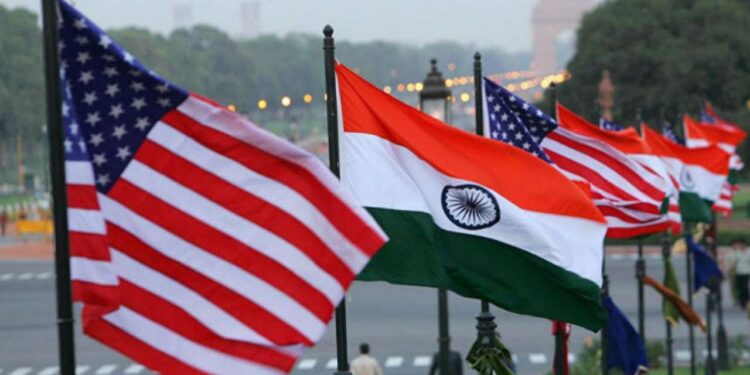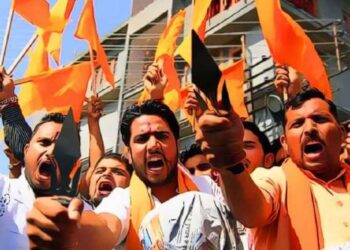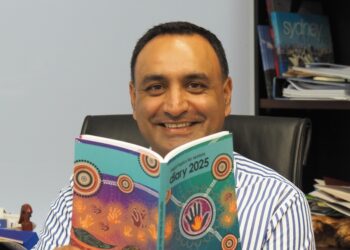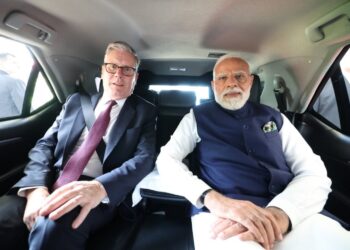Indian Americans — now numbering more than 5.2 million — are prominent in nearly every sphere of American life, from business and technology to politics and entertainment. But beyond the high-profile success stories lies a much more nuanced and layered picture of the community’s social, political and cultural realities. A major new report from the Carnegie Endowment for International Peace — How Indian Americans Live: Results From the 2024 Indian American Attitudes Survey — provides the most comprehensive empirical look yet into how Indian Americans see themselves and their place in both the United States and India.
Based on a nationally representative online survey of 1,206 Indian American adults — including citizens and noncitizens — the study was conducted in late 2024 in partnership with YouGov. It is the final in a trilogy of reports from Carnegie’s South Asia Program on Indian American attitudes, and is authored by political scientists Sumitra Badrinathan, Devesh Kapur, Annabel Richter and Milan Vaishnav.
The findings challenge stereotypes and offer a data-rich narrative of a community deeply engaged in civic life, increasingly aware of its heritage, and yet divided over critical issues of caste, nationalism, and identity.
Download the full report here.
Civic and Political Engagement: A Divided Field
Indian Americans show uneven levels of civic and political participation. U.S.-born citizens were the most engaged in local civic activities like community service (17%) and problem-solving with others (14%), while noncitizens and foreign-born citizens trailed behind. Attendance at protests (6%) and public meetings (8%) was relatively low.
On political engagement, however, the story was more dynamic. Two-thirds (67%) said they discussed politics with family and friends — a jump of over 20 points from 2020 — highlighting increased political interest in a highly charged election year. But fewer participated in direct political activities: only 14% contributed money to campaigns, and 10% contacted elected officials.
While noncitizens face formal exclusions from voting and campaign financing, they still reported strong interest in U.S. politics. Among U.S.-born respondents, 19% said they had volunteered on political campaigns — a figure that dropped to just 5% among foreign-born citizens and 4% among noncitizens.
Connectivity to India: Legal, Personal, and Cultural Bonds
Indian Americans remain strongly connected to their ancestral homeland — in complex and varied ways. Nearly 4 in 10 respondents without Indian citizenship hold Overseas Citizenship of India (OCI) cards. Among those who didn’t, lack of interest or knowledge — not opposition — was the main reason.
Personal ties were especially strong among noncitizens: 71% stayed in regular contact with friends and family in India, and 46% had travelled there in the past year. Cultural connections also remain vibrant across all groups. A remarkable 81% reported eating Indian food recently, 65% had watched Indian films or TV shows, and 38% engaged with Indian music, dance or art. Only 7% reported no cultural engagement at all.
Contrary to assumptions that U.S.-born generations drift away, these findings suggest enduring cultural ties and evolving forms of connection that are not limited to travel or legal status.
Identity: Being and Becoming Indian American
The survey found that Indian identity is becoming more — not less — important to second-generation Indian Americans. In 2020, 70% of U.S.-born respondents said that being Indian was important to them. By 2024, that number had jumped to 86%.
But the terminology is shifting. While “Indian American” was once the dominant label, only 26% of respondents used it in 2024 — down from 43% in 2020. The label “Asian Indian” saw a sharp rise, especially among foreign-born respondents. Meanwhile, more U.S.-born respondents now prefer “Asian American” or simply “American.” These shifts hint at changing political sensibilities, as younger Indian Americans may seek broader pan-Asian or race-conscious affiliations in a polarised America.
Despite differences in terminology, 47% of respondents said they felt equally Indian and American. Only 5% rejected both identities altogether — indicating that hybridity, not assimilation or rejection, is the prevailing mode.
Religion and Caste: Persisting Boundaries
Religious identity remains a central pillar of self-understanding for many Indian Americans. A majority (55%) identified as Hindu, with Muslims (14%), Christians (8%), and the nonreligious (14%) making up significant shares. Levels of religiosity varied widely — 71% of Muslims described religion as “very important” to their lives, compared to 38% of Hindus.
On caste, the survey revealed growing awareness and opposition to discrimination. About one-third of respondents did not identify with any caste, while 46% identified as General or Upper caste. Only small minorities identified as OBC (5%), Dalit (2%), or Adivasi (1%).
Strikingly, 77% of all respondents supported laws to prohibit caste-based discrimination. Among U.S.-born respondents, support was even higher at 83%. The findings underline a generational and ideological shift within the diaspora, where caste is increasingly seen as a justice issue rather than a matter of tradition.
Majoritarianism: Watching Two Storms
The rise of ethnonationalism — both in India and the U.S. — is a growing concern for Indian Americans. A commanding 81% agreed that the 2017 white supremacist rally in Charlottesville represented a threat to minorities in America. Slightly fewer (70%) said that a 2024 campaign speech by Indian Prime Minister Narendra Modi — in which he labelled Muslims as “infiltrators” — signalled similar dangers in India.
Concerns over Hindu majoritarianism varied by religion. While 66% of Hindu respondents agreed with the statement, the figure was higher among Muslims (75%) and Christians (71%). Hindus were also more likely to perceive a greater threat from white nationalism in the U.S. than from Hindu nationalism in India.
The report suggests that Indian Americans are not insulated from the polarising forces shaping politics in both countries, and many are alert to the risks of majoritarianism — whether in the form of white supremacy or Hindutva.
Discrimination: A Lived Reality
Nearly half (49%) of respondents reported experiencing some form of discrimination in the past year. The most common basis was skin colour (31%), followed by country of origin (20%), religion (19%), gender (15%) and caste (7%).
Interestingly, U.S.-born citizens were the most likely to report being discriminated against — 64%, compared to 38% of foreign-born citizens. This could reflect either higher exposure or greater sensitivity to systemic bias.
When asked about perceived discrimination, 58% identified anti-Muslim sentiment as a significant problem in the United States. Discrimination against Sikhs (44%) and Hindus (40%) was also seen as noteworthy. The perception of caste-based discrimination — 38% — was also higher than expected, particularly given how recently it has entered mainstream public discourse in the U.S.
Political Knowledge: Gaps in Both Directions
Despite their high educational attainment, Indian Americans showed notable knowledge gaps about politics. Only 39% correctly identified that India’s prime minister is selected by the parliamentary majority. In contrast, 88% correctly named Britain as the colonial ruler, and 73% knew India’s first prime minister was Jawaharlal Nehru.
Knowledge about the U.S. was stronger, particularly among U.S.-born citizens. But only 62% knew that freedom of religion is protected by the First Amendment, and just over half knew the term length for a U.S. senator.
These gaps suggest that while Indian Americans are highly engaged, they are not necessarily better informed — a disconnect that could affect advocacy and political influence both domestically and transnationally.
Complexity, Not Homogeneity
The 2024 IAAS debunks simplistic narratives about Indian Americans as a uniformly successful, politically conservative or culturally distant community. Instead, it highlights a vibrant, pluralistic diaspora negotiating its place in two fast-changing democracies.
Whether confronting caste, navigating identity, or pushing back against discrimination, Indian Americans — as this report shows — are not a monolith. They are, to paraphrase the report’s authors, a community that “contains multitudes.”
Read the full report:
How Indian Americans Live: Results From the 2024 Indian American Attitudes Survey











